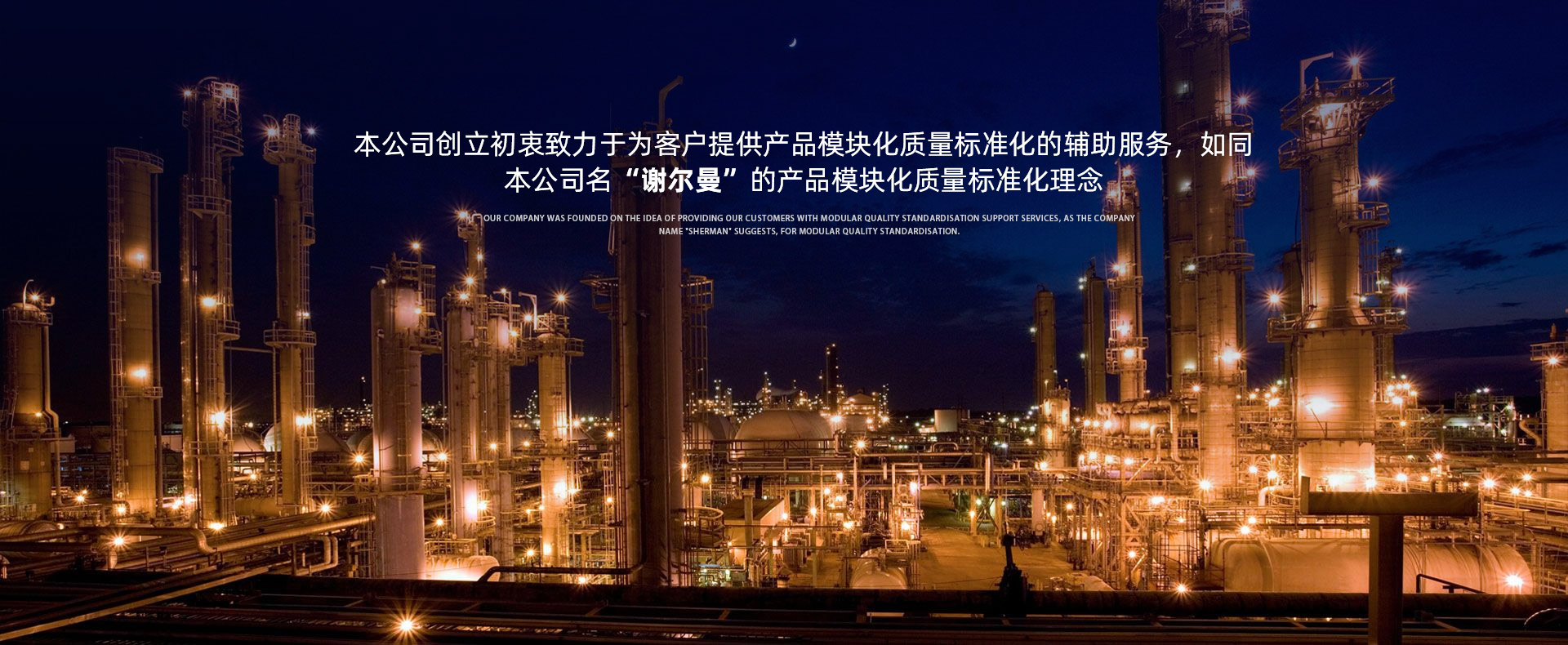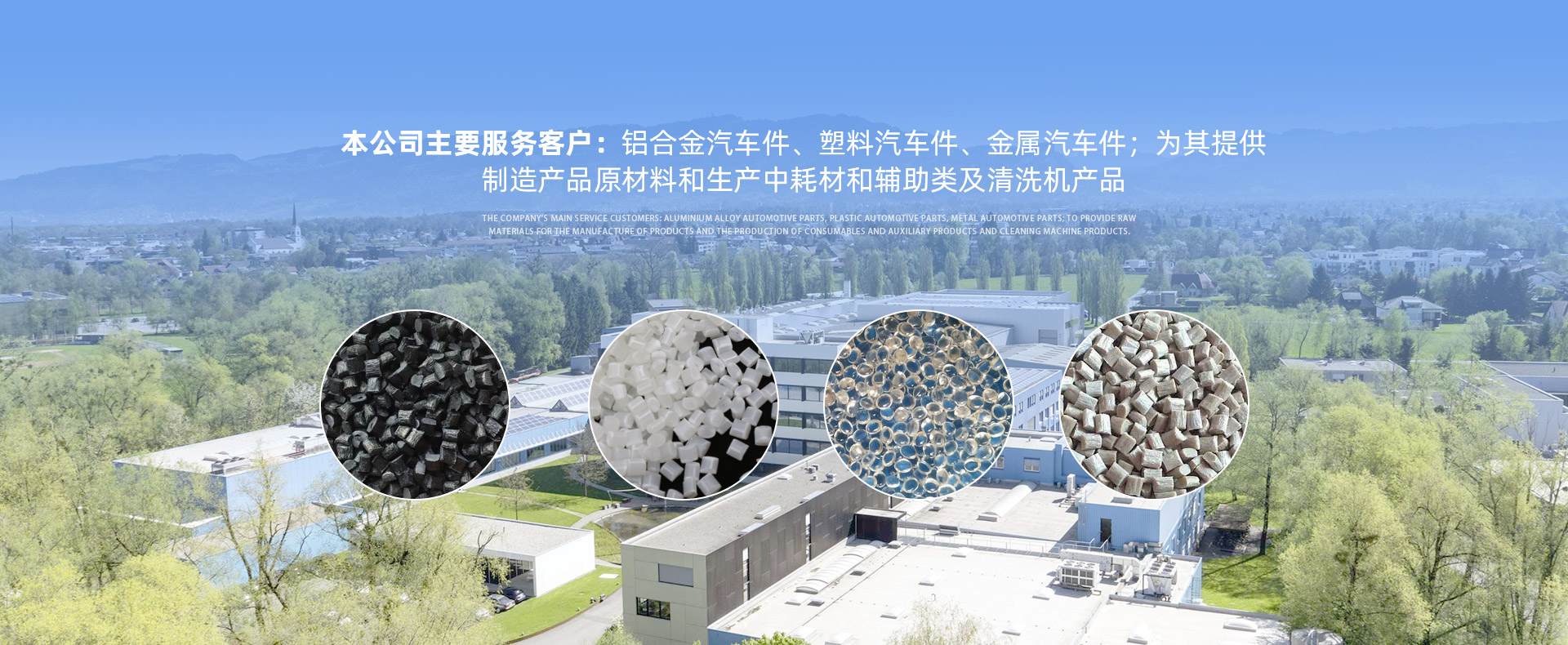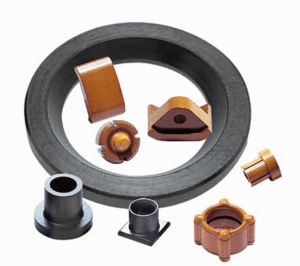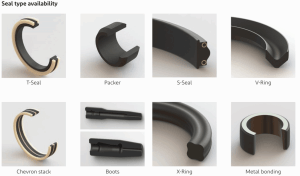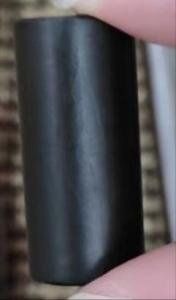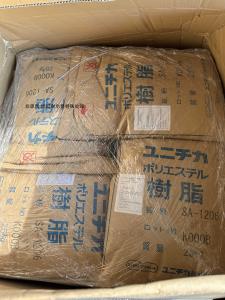
|
- 品牌:塑料汽车发动机
- 价格: ¥13.7/千克
- 发布日期: 2024-08-09
- 更新日期: 2025-05-09
| 品牌 | 塑料汽车发动机 |
| 货号 | |
| 用途 | 汽车发动机部件 |
| 牌号 | 塑料汽车发动机 |
| 型号 | 塑料汽车发动机 |
| 品名 | 聚酰亚胺类 |
| 包装规格 | 包盒根块 |
| 外形尺寸 | |
| 生产企业 | 众多 |
| 是否进口 |
塑料汽车发动机起源于 1970 年代后期,由 Polimotor Research 的 Matthew (Matti) Holtzberg 及其同事进行研究和工作。[1]从那时起,霍尔茨伯格和其他人在该领域做了稳定的工作。
霍尔茨伯格的早期作品
[编辑]Matti Holtzberg 于 1969 年 尝试为 Austin Mini 发动机制造聚合物活塞。活塞只运行了 20 分钟,直到失效。霍尔茨伯格通过在活塞上安装铝冠来解决这个问题,并在1970年代初期将这些活塞卖给了赛车制造商[2]。
Polimotor研究
[编辑]Matti Holtzberg 于 1979 年创立了 Polimotor Research Inc.。它的总部设在新泽西州的费尔劳恩。该公司与供应商和赞助商合作,在 1980 年代制造并生产了由大量聚合物组成的发动机。
版本
[编辑]版本一基于福特的 2.3 升 Pinto 发动机,重 152 磅(69 公斤)(而其铸铁版本为 415 磅(188 公斤)。它设计用于在 318 rpm 时产生 237 马力(9200 kW)。它由金属气缸套、金属燃烧室顶部、金属活塞冠、轴承、阀门和阀座以及一个 2.3L Pinto 曲轴组成。发动机中的几乎所有其他部件,包括缸体、连杆和活塞裙部,均由当时由 Amoco Chemicals Co. 生产的玻璃纤维增强聚酰胺酰亚胺热塑性树脂制成。[3][4]发动机从未安装在车辆中。
尽管消息人士声称福特是制造发动机的合作伙伴,[3][5]但霍尔茨伯格后来被引述说“福特根本没有参与”。[4]
版
[编辑]另一台发动机据称基于考斯沃斯 BDA 和 YB 系列发动机,重 168 磅(76 公斤),是金属发动机重量的一半。[4] 塑料部件包括发动机缸体、凸轮盖、进气喇叭、进气阀杆、活塞裙和腕销、连杆、刮油器活塞环、挺杆、气门弹簧固定器和正时齿轮。[6]
该发动机进行了两个赛季的比赛。它驾驶 Lola T616 HU04 参加比赛,并在 1984 年和 1985 年参加了国际汽车运动协会 (IMSA) 骆驼 GT 锦标赛的骆驼灯(C2 组)类别。该车获得了多项前 5 名的成绩,包括在 1985 年石灰岩 2 小时耐力赛中获得第三名的 成绩。[6][7]
Holtzberg专利
[编辑]在整个 1980 年代,Holtzberg 获得了 10 项复合材料发动机零件及其生产方法的专利。这些专利是在 1983 年至 1988 年之间颁发的,本节将对此进行详细说明。
颁发的 项专利是针对点火电缆的,引用了其他非金属导电材料的现有技术及其减少射频干扰相关问题的能力。这些电缆由石墨/树脂复合导体绞线和硅胶保护套组成。这些股线将被扭曲在一起并穿过液体基质材料, 被护套包围。这两部分将被挤出在一起形成电缆,并确保数千根单独的石墨复合细丝的良好结合结构。[8]
大多数专利是针对聚酰胺酰亚胺发动机部件的,具有用于石墨、玻璃或钛增强复合材料的潜力。据称,这些发明具有 的刚度重量比,比传统部件轻70%,并减少了发动机内的振动和力。据称,由于采用注塑成型,复合材料部件可以降低生产要求,从而减少了精加工工作。
尽管零件之间的温度、时间和其他工艺变量不同,但一般的制造过程都遵循。该部件首先进行注塑成型,并使其冷却超过其塑性变形温度。然后,通过固态聚合在一系列温度步骤下进行后固化。这是在惰性气氛中进行的,这有助于排出反应的副产物,直到聚合物具有化学稳定性。在此过程中,材料的热变形温度也会升高。现在,该零件已被冷却并进行后处理。后处理可以采取机械加工、金属零件的插入或粘合或零件的简单清洁的形式[9][10][11][12][13][14][15][16][17][18]。
Composite Castings LLC
[编辑]1990 年,Matti Holtzberg 在佛罗里达州西棕榈滩创立了 Composite Castings LLC。[2]到2011年,他们已经开发出V4碳纤维增强环氧树脂复合发动机缸体,其材料由Toho Tenax提供。Holtzberg 声称该块比等效的铝制模型轻 50%。这些砌块被生产成净形状,因此只需最少的整理工作即可使用。Holtzberg声称,与压铸相比,这可将模具和生产成本降低50%。[19]
弗劳恩霍夫和住友的研究
[编辑]2015年4月,弗劳恩霍夫集团与住友电木株式会社的高性能聚合物部门合作,宣布他们开发了一种单缸研究发动机,其外壳由注塑成型的玻璃纤维增强酚醛树脂(各成分为55/45)制成。该发动机的重量比相当于铝的铝轻约 20%。他们的设计在热应力和机械应力高的地方使用金属嵌件,例如在气缸套中。[20]
该发动机在2015年汉诺威工业博览会上展出。[20]
索尔维复兴Polimotor
[编辑]2015 年 5 月,据报道,比利时化学公司 Solvay 表示有兴趣在 Matti Holtzberg 的协助下恢复这一概念。[4]该发动机计划重量小于148磅(67公斤),产生超过420马力(310千瓦),还计划采用涡轮增压。[4] 几种成分将被聚合物对应物取代,这些可以在下表中看到。[21]
| 部分 | 材料 | 描述 | 参考 |
|---|---|---|---|
| 凸轮链轮 | PAI公司 | 30% 碳纤维 | [22] |
| 石油清除管线 | 偷看 | 30% 碳纤维 | [23] |
| 水泵出口 | 购电协议 | 30% 玻璃纤维增强材料 | [24] |
| 水泵密封 | 氟橡胶 | [24] | |
| 水泵内件 | 缴费灵 | 40% 玻璃纤维增强材料 | [25] |
| 燃油导轨 | 缴费灵 | 40% 玻璃纤维增强材料 | [26] |
| 喷油器O形圈 | 氟橡胶 | [21] | |
| 进气流道 | 偷看 | 30% 碳纤维,FDM 制造 | [27] |
| 增压室 | 聚酰胺6 | 40% 玻璃珠,SLS 制造 | [28][29] |
| 油泵壳体 | 偷看 | 30% 碳纤维 | [30] |
| 凸轮盖 | 缴费灵 | [21] |
该发动机计划安装在 Norma M-20 底盘上,并于 2016 年在 Lime Rock 参加比赛,并可能在 2017 年参加勒芒比赛。[31][32]然而,这并没有实现。
The Plastic automotive engine has its origins in the late 1970s with research and work done by Matthew (Matti) Holtzberg of Polimotor Research and his associates.[1] Since then Holtzberg and others have done steady work in the field.
Holtzberg's early work
[edit]Matti Holtzberg first attempted to make polymer pistons for an Austin Mini engine in 1969. The pistons ran for only 20 minutes until failure. Holtzberg remedied this by fitting the pistons with aluminium crowns and he sold these pistons to racing builders during the early 1970s.[2]
Polimotor research
[edit]Matti Holtzberg founded Polimotor Research Inc. in 1979. It was based in Fair Lawn, New Jersey. The company, in cooperation with its suppliers and sponsors, created and raced engines consisting of a large percentage of polymers in the 1980s.
Version One
[edit]Version one was based on Ford's 2.3-liter Pinto engine and weighed 152 pounds (69 kg) (vs. 415 pounds (188 kg) for its cast iron counterpart). It was designed to produce 318 horsepower (237 kW) at 9200 rpm. It was composed of metal cylinder sleeves, metal combustion chamber tops, metal piston crowns, bearings, valves and seats, and a stock 2.3L Pinto crankshaft. Nearly everything else in the engine, including the block, rods and piston skirts, were made of glass reinforced Polyamide-imide thermoplastic resins manufactured at the time by Amoco Chemicals Co.[3][4] The engine was never installed in a vehicle.
Although sources claimed that Ford had been a partner in creating the engine,[3][5] Holtzberg was later quoted as saying that "Ford was not involved at all".[4]
Version Two
[edit]Another engine, supposedly based upon the Cosworth BDA and YB series engines, weighed 168 pounds (76 kg), half the weight of its metal counterpart.[4] Plastic parts included the engine block, cam cover, air intake trumpets, intake valve stems, piston skirts and wrist pins, connecting rods, oil scraper piston rings, tappets, valve spring retainers and timing gears.[6]
The engine was raced over two seasons. It was raced in a Lola T616 HU04 and competed in the International Motor Sports Association's (IMSA) Camel GT Championship in the Camel Lights (Group C2) category in 1984 and 1985. The car earned several top 5 finishes including its best finish of third in class at the 1985 Lime Rock 2 hours.[6][7]
Holtzberg patents
[edit]Throughout the 1980s, Holtzberg was granted 10 patents for composite engine parts and their methods of production. The patents were issued between 1983 and 1988 and are elaborated on in this section.
The first patent issued was for ignition cables, citing prior art for other non-metallic conductive materials and their ability to reduce RF interference related problems. These cables consisted of a graphite/resin composite conductor strands and a protective silicone sheath. The strands were to be twisted together and drawn through the liquid matrix material, finally being surrounded by the sheath. The two parts would be extruded together to form the cable and ensure a well bound structure of thousands of individual graphite composite filaments.[8]
The majority of patents are for Polyamide-imide engine components, with the potential for graphite, glass or titanium reinforcement as a composite. The inventions are claimed to have a superior stiffness-to-weight ratio, be up to 70% lighter than traditional parts and reduce vibration and forces within the engine. The composite parts are also claimed to reduce production requirements due to being injection moulded with consequently reduced finishing work.
Although the temperature, time and other process variables differ between parts, the general manufacturing process follows. The component is first injection moulded and allowed to cool past its plastic deformation temperature. It is then post cured by solid state polymerisation at a series of temperature steps. This is performed in an inert atmosphere which helps to expel by-products of reactions until the polymer is chemically stable. During this process the heat deflection temperature of the material also increases. The part is now cooled and post-processed. Post processing can take the form of machining, insertion or adhesion of metal parts or a simple cleaning of the part.[9][10][11][12][13][14][15][16][17][18]
Composite Castings LLC
[edit]In 1990 Matti Holtzberg founded Composite Castings LLC, based in West Palm Beach, Florida.[2] By 2011 they had developed a V4 carbon reinforced epoxy composite engine block with materials supplied by Toho Tenax. The block is claimed by Holtzberg to be up to 50% lighter than an equivalent aluminium model. The blocks are produced to net shape so minimal finishing work is required to make them ready for use. Holtzberg claims that this reduces tooling and production costs by 50% in comparison to die casting.[19]
Fraunhofer and Sumitomo research
[edit]In April 2015 the Fraunhofer group in collaboration with the high performance polymer division of Sumitomo Bakelite Co announced their development of a single cylinder research engine with a casing made of injection moulded glass fibre reinforced phenolic resin (55/45 respective composition). The engine weighs about 20% less than an equivalent of aluminium. Their design uses metal inserts in places of high thermal and mechanical stress, for example in the cylinder liner.[20]
The engine was presented at the 2015 Hannover Messe.[20]
Solvay revival of Polimotor
[edit]In May 2015 it was reported that the Belgian chemical company Solvay had shown interest in reviving the concept with assistance from Matti Holtzberg.[4] The engine is planned to weigh less than 148 pounds (67 kg) and generate over 420 horsepower (310 kW), it is also planned to be turbocharged.[4] Several components will be replaced with polymer counterparts, these can be seen in the table below.[21]
| Part | Material | Description | Reference |
|---|---|---|---|
| Cam sprockets | PAI | 30% carbon fibre | [22] |
| Oil scavenge lines | PEEK | 30% carbon fibre | [23] |
| Water pump outlet | PPA | 30% glass fibre | [24] |
| Water pump seal | FKM | [24] | |
| Water pump internals | PPS | 40% glass fibre | [25] |
| Fuel rail | PPS | 40% glass fibre | [26] |
| Injector o-rings | FKM | [21] | |
| Intake runner | PEEK | 30% carbon fibre, FDM manufactured | [27] |
| Plenum chamber | PA6 | 40% glass beads, SLS manufactured | [28][29] |
| Oil pump housing | PEEK | 30% carbon fibre | [30] |
| Cam cover | PPS |
[21] |


